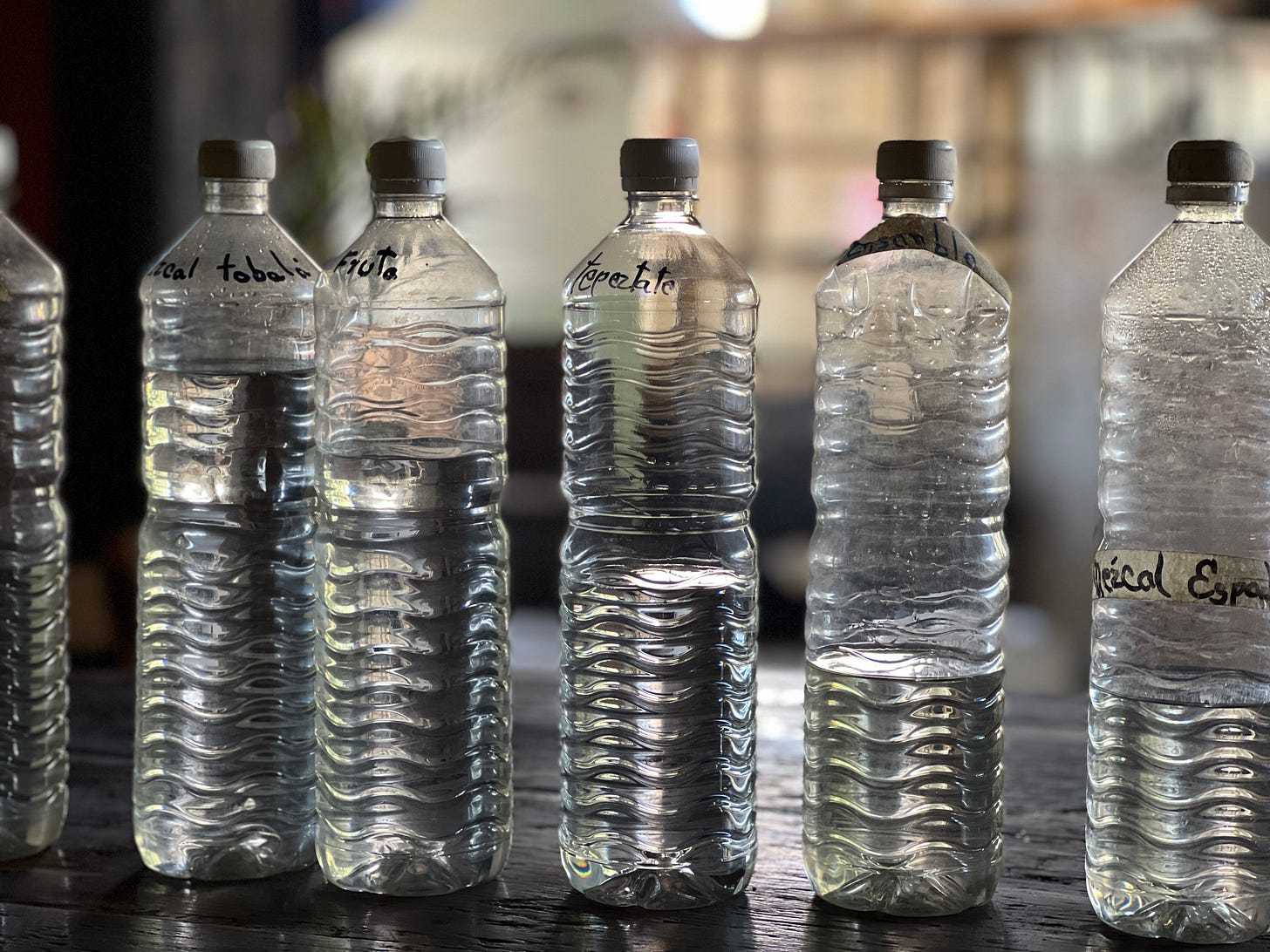When I say mezcal, what comes to mind? I’ve heard a few refrains over and over: “stronger than tequila,” “smoky,” and “isn’t there something about a worm in the bottle?” All three are myths well worth debunking.
Last spring, I spent a mezcal-soaked few days in Oaxaca City with one of my best friends and while I knew there was more to it than campfire in a glass, the complexity of mezcal surprised (and really delighted) me. As both tequila and mezcal are having quite a heyday with no signs of slowing, I thought it was the right time to dive in in earnest. Because please tell me what’s more important than sounding like you know more than the bartender when you’re ordering a drink?
Who’s giving us this mezcal intel? Monica Bautista Cortes, global brand ambassador for Casa Cortes, is the guide that got Yasmin Fahr and I drunk in the name of research. Monica’s family has been making mezcal in a small town outside of Oaxaca City since 1840. And Kaj Hakkinen, co-Founder of the Back Bar Project, which brings said mezcals to the US. Kaj also produced the excellent documentary, Sons of Mezcal.
Let’s get this out of the way. Is mezcal always smoky?
Monica: It is most certainly not. Mezcal is very complex and there are so many varieties of agave used to produce mezcal, each one with its peculiar properties that lend a different taste profile.
Why do people (Americans, at least) associate mezcal with smoke?
Monica: I think it most likely has to do with what was initially introduced in the US market. This was a product that for one reason or another had a smoky aspect about it and was just what caught on as being the norm for mezcal.
Moving on, what types of mezcal are there and what are some key differences between them?
Monica: Generally speaking most of what we see nowadays falls under the "joven" category, which is the clear, un-aged mezcal, but there are also reposados and añejos which are the ones aged in wooden barrels. Within that, there are different types of agaves that are used for mezcal. The key differences between these will be found in its aromas and taste profiles. Some are very herbaceous and green, while others may be fruity and floral, or even have a cheesy/sour profile.
Editor’s note: Monica taught us about the differences between artisanal, ancestral, and industrial production as well as some basic differences in flavors. So, to prove what a good teacher she is…
Industrial mezcal is, well, exactly as it sounds. Bigger production. Mezcal ancestral and mezcal artesanal are both held to strict manual, traditional processes, with agave cooked in earthen pits. The difference between them is in how the sugars are extracted.
The most common type of mezcal is espadín, which can taste the closest to tequila because the type of agave used is genetically similar to blue agave. Arroqueño is less sweet, but often has notes of fruit and burnt sugar. Tepeztate agave takes the longest to mature, and as such is a rare commodity; the flavors are prized and aromatic. And tobalá is likewise hard to grow, but offers a delicate, herby, earthy flavor profile.
Ok, how did I do?
Monica: Super bien!
Kaj: [Certain values, like sustainability] don't always hold true when foreign ownership or corporations get involved. I absolutely avoid brands that are made industrially. It can be hard to tell the difference, but non-industrial bottles of certified mezcal will state "Artesenal" or "Ancestral" on the label, indicating they were produced using traditional methods.
I was surprised to learn that, like wine, the flavors in mezcal are based on its terroir and the processes of the individual mezcalero. Can you expand on this?
Keep reading with a 7-day free trial
Subscribe to To Taste by Nicole to keep reading this post and get 7 days of free access to the full post archives.





